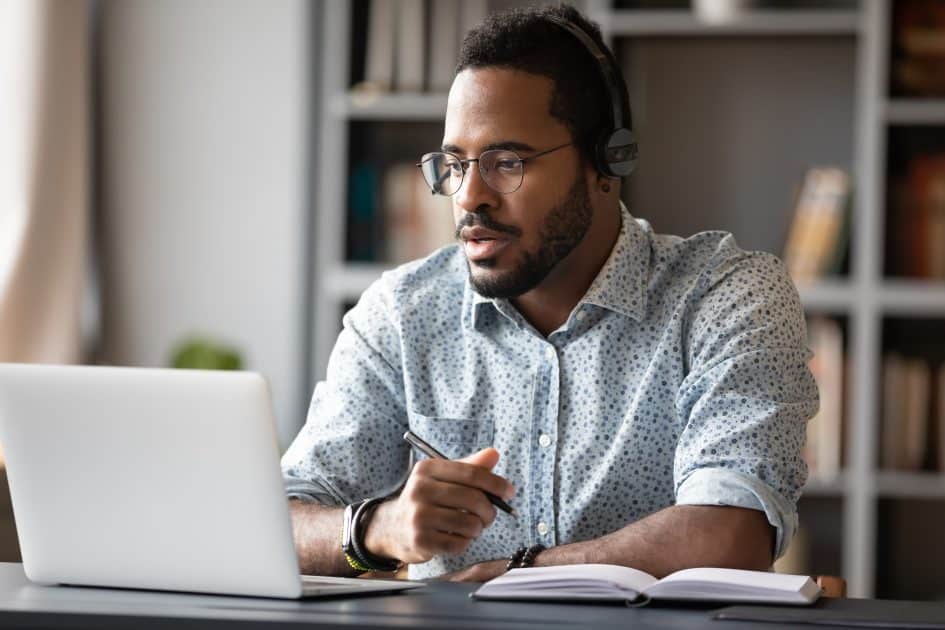We’re all probably bored to tears talking about COVID-19 and lockdown by now. 2020 Has been a year and it’s taking a toll on us like we could never have imagined. Zoom fatigue, pandemic panic, corona chaos – we certainly weren’t predicting any of these on New Year’s Eve 2019. But apart from all the negativity, and maybe because of all of it, it’s necessary to take some time to focus on the positives that we can drag out of this year. In terms of learning and teaching English as a Foreign Language, it’s interesting to realise what we have learned about learning from lockdown.
Things We’ve Learned about Learning from Lockdown
Read more: TEFL After COVID-19: Where to From Here?
Even though all industries and sectors were affected by COVID-19 and the subsequent lockdowns, education around the world was dealt a particularly harsh blow. Many TEFL teachers lost their jobs as students were no longer able to attend English lessons or even school. Those teachers who were lucky enough to keep their jobs had to quickly acclimatize to teaching English online, with or without the resources to support them. Learners themselves also had to get to grips with learning in a lockdown environment and deal with more independence when it came to learning and a whole new virtual learning environment.
Read more: 9 Ways to Make Your Online English Lessons Interesting
We have all learned to adapt to our circumstances and indeed we have even found a few silver linings to take away with us. One of those would be what we have learned about learning from lockdown.

1. Blended learning is the way forward
While previously teachers certainly tried to make use of the various multimedia tools at their disposal to supplement their EFL lessons, it was nevertheless often more of an afterthought than a primary concern. Teachers were more likely to introduce a video or webquest or flipped learning lesson for variety rather than utilizing any of those for primarily for teaching purposes. But lockdown and distance learning has shown us that blended learning is the way forward.
This is not to say that traditional lessons should be done away with completely. But, if utilized appropriately, blended learning is able to give learners more autonomy in their learning and teachers are able to introduce a whole new level of personalization, making blended learning lessons very effective teaching tools.
2. Flipped learning should be at the center of our teaching
Our learners have shown us that they are more than capable of independent study and self-review. Not only that but they enjoy learning using online resources. This means flipped learning should be incorporated into our teaching in a more intentional way. Flipped learning allows our learners to learn at their own pace yet still be able to refer to their teacher and classmates for clarification and consolidation.
Read more: Flipped Classrooms
3. Collaboration is key
Even though our learners aren’t in the same classrooms, the need for interactive activities and collaboration remain important to them. Perhaps because of the digital divide, it has become obvious our learners crave the connection with their classmates and teachers.
This shows us that even when we are back in physical classrooms, we should not forget the importance of collaboration in our lessons. Make sure that you design and set up activities that foster relationships between the learners and promote authentic communication and connection.
4. Learning is a social process
It follows that our students learn through this collaboration with their peers. This peer-to-peer communication is not only about checking answers or problem-solving, but also about sharing knowledge, supporting each other and being creative together. In the beginning of our digital learning journeys, it was not uncommon to find that students were feeling isolated or lonely, and this was primarily due to their distance learning being considered as exactly that – distance learning.
Instead what we need to do is ensure our learners remain connected to their classmates, even if they are not in the same physical space. What this means going forward is that we should create situations which allow our students to connect on a personal level, as this will help them in the learning space.
5. Our learners are capable of more (than we think)
Previously, giving homework was never a popular option. Learners didn’t like doing homework and teachers didn’t like giving homework because they knew this, and the chances of their learners actually doing it were slim. This might have been for many reasons but quite possibly it was because the homework we were giving them was too teacher-led. After all, many times homework consisted of practice grammar and vocabulary activities. Now, from their performance with distance learning, it is clear our learners are more capable than we give them credit for.
A change in the nature of homework should be the first result of this realization. Homework tasks should not be repetitive and basic. Rather we can give our learners more complex and intricate homework which requires more thought, research and consideration.
Read more: Give Homework Students Will Want to Do
6. Our learners are people
Of course we’ve always known that our learners are people, but lockdown has re-inforced to us the idea that a learner’s background has a huge effect on their learning capacity. Lockdown created such an intense environment fraught with a lot of anxiety and stress, and it became apparent that this was affecting our learners’ moods, behaviour and learning capacity.
When we are back in our classrooms, we shouldn’t forget the impact a learner’s life will have on their performance in the classroom. We must take time to acknowledge and deal with our learners’ lives so that we can help them perform at the best of their ability.
7. We are all in this together
Learning and teaching online from home is a tricky business. There are often distractions and noises in the background, or technology can play up and cause interruptions in your lessons. Both teachers and learners have had to learn to be patient and forgiving. As much as we can try make everything perfect, there is always a chance a toddler will want to be a part of your class or a dog might not stop barking for the duration of the lesson.
Back in the classroom, we should bring this mentality back with us. Sometimes we can be late for class, or forget our homework at home. There is no need to freak out about the little things, and we can all work together to make the best of a sticky situation.
2020 May have been a tough year, but for the most part, we’ve done a pretty good job of getting on with our lives as best as we can. If we can take stock of how much we have accomplished despite the circumstances and learn from those lessons, then we can walk into 2021 with a few more teaching tools in our arsenal.
The post 7 Things We’ve Learned about Learning from Lockdown appeared first on The TEFL Academy Blog.


